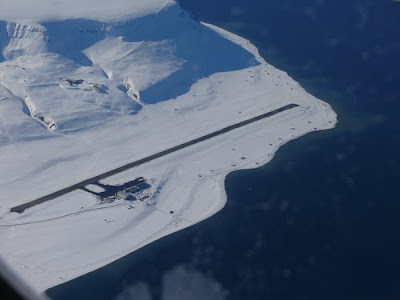Here is the list of top construction companies in India on the basis of their tie-ups with their international counterparts, technological advancements, generating money from the market to trigger their expansion plans and for establishing an entire township in the wastelands and making it the hottest commercial destination.
· Larsen & Toubro: It is India's biggest construction organization. Supported by its equally proficient allied sectors, the Engineering, Construction and Contracts Division of L&T provides EPC solutions on concept and expenses which could be incurred while performing engineering and infrastructure projects on large scale. L&T's ECC department carry out large scale projects entailing ground-breaking design and wide-ranging construction services ranging from procurement, furnishing, fitting, testing and commissioning. L&T is known for its excellence and timely deliverance. With an annual turnover of Rs 25,000 crore, L&T has more 12,000 skilled professional working for it.
· DLF: DLF's chief business is to develop housing, marketable and retail properties. Currently it has undertaken the development of 70 million sq ft of housing projects which it intends to finish in the next three years. DLF has joined hands with Delhi Development Authority to develop townships in Amritsar, Pune, Gurgaon, Mumbai, Chennai and Goa. DLF has been the construction company behind different malls in Hyderabad, Delhi, Bangalore, Mumbai, Amritsar, Ludhiana, Kochi and Chennai. The company is also developing 50-75 hotels along with Hilton Hotels and infrastructure and SEZ in India in collaboration with Laing O'Rourke (UK).
· Tata Projects: Tata Projects registered an annual turnover of Rs 2,300 crore on July 1, 2007. With more than 1,500 professionals the company has emerged as one of the chief player in EPC projects. Over the last four years, it has attained a CAGR of 50 per cent which quadrupled its annual turnover of 2006-07. Tata Projects functions in concentrated divisions like broadcast and distribution, steel, power production, oil, gas and hydrocarbons and industrial infrastructure through its five strategic business units (SBU)
· Gammon India: With an annual turnover of more than Rs 7,010 crore, Gammon India is famously known as 'Builders to the Nation'. It is the one and only construction firm in India to get an ISO 9001 authorization for its operational sectors in civil engineering and has successfully carried out diverse civil engineering operations some of which include constructing one of the longest river bridge in Asia at Patna across the Ganges and the longest bridge in India across river Jadukata.
· Hindustan Construction Company: The Company has a reputation of performing large-scale infrastructure projects besides developing hi-tech construction equipments. It has carried out a number of challenging and expensive projects in sectors like oil and gas pipeline, power, urban infrastructure, transportation, irrigation and water supply, etc. HCC has also acquired projects in countries like Iraq, Tanzania, Saudi Arabia, Bhutan and Sri Lanka. It was the first Indian firm to execute and sustain an integrated quality administration structure and has an annual turnover of more than Rs 2,394.50 crore.
· Sobha Developers Ltd: With an annual turnover of Rs 1,189 crore, Sobha Developers Ltd was initiated by the now chairman PNC Menon in the year 1995. On June 30, 2007, the company has 3,706 skilled professionals working for it. At present it owns Rs 3,500-acre land in eight Indian cities namely Coimbatore, Bangalore, Mysore, Chennai, Thrissur, Kochi, Pune and Hosur. The company's clientele include some of the top players in IT, hotel and construction sector such as Hewlett Packard, Mico, Infosys, Ramaraju Developers, Dell, Timken, etc.
· Shapoorji Pallonji & Co: The Company has more than 3,500 professionals working for it and is largely driven by its loyalty to consumer satisfaction. Some of the major projects undertaken by Shapoorji Pallonji & Co are World Trade Centre, Mumbai; TELCO industrial complex, Pune; Bhabha Atomic Research Centre, Kalpakkam; HSBC Bank, Mumbai; Hotel Taj Intercontinental, Mumbai; Bank of India, Mumbai; Indira Gandhi International Airport, New Delhi, etc. the company has created magnum opus of construction and has been a consistent executer of challenging projects.
· Unitech: Recently Ramesh Chandra, Unitech's Chairman has declared the investment of $ 720 million by his company in the coming four years to develop 28 hotels along with Marriott International. Its chief activities include construction, expansion of real-estate, consultancy in associated sectors, hotels, electrical broadcast and information technology.
· Nagarjuna Construction Company: The Company has a track record of more than 28 years and is structured in nine business categories including housing, water and environment, irrigation, transportation, oil and gas, electrical, metals, real estate and power. It has an annual turnover of Rs 7,300 crore and plays an active role in developing BOT road projects, seaports, BOOT hydropower projects, etc.
· Punj Lloyd: Crowned as 'all-terrain specialists', Punj Lloyd is one of the biggest Indian engineering construction firms. The company performs its operations in Asia Pacific, China, Middle East, Europe, Africa, South Asia and Caspian. It provides services ranging from engineering to project administration, innovative designs to construction, to eminent clients like Petroleum Development Oman, British Petroleum, Pertamina, Shell, ADNOC, Cairn Energy, etc.









